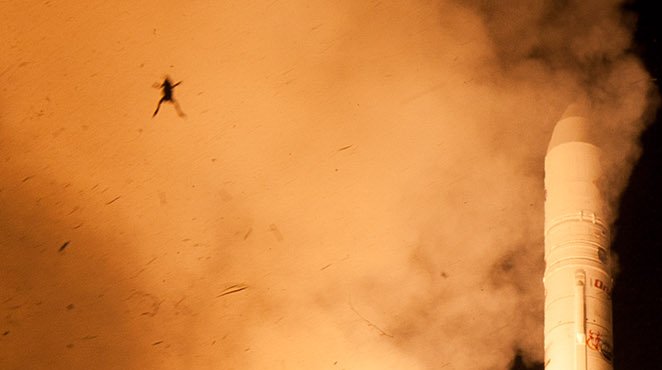The LADEE -- Lunar Atmosphere and Dust Environment Explorer -- lifted off from Wallops Flight Facility on Virginia's Eastern Shore at 11:27 p.m. Friday. It's headed all 238,850 miles to the moon, but the ill-fated frog probably just rocketed a few dozen feet.
"The photo team confirms the frog is real and was captured in a single frame by one of the remote cameras used to photograph the launch," NASA wrote of the image. "The condition of the frog, however, is uncertain.
Chris Perry, who set up the camera, said it was about 150 feet from the rocket. The frog was probably about 50 feet from the camera.
"Our photo archive contains launch sequence photos from every launch, and none that I’ve seen so far has shown us anything like this before," Perry said. "Definitely a surprise to us (and a little sad)."
NASA also said its operations and the wildlife refuge on Wallops Island, where the U.S. Fish and Wildlife Service conducts research and management for wildlife in need of protection on the island's salt marshes, can coexist peacefully.
"NASA’s launch facilities, roads, and facilities take up a small percentage of the area," the post said. "The rest of the area remains undeveloped and provides excellent habitat for wildlife. During launches, short term disturbance occurs in the immediate vicinity of the launch pads, but the disturbance is short-lived allowing space launches and a wildlife habitat to coexist."
LADEE is due to reach the moon October 6.

Read More
- Trout eats shrews -- 19 of them!
- Voyager 1 may or may not be interstellar, who knows?
- Ellie Goulding and Ed Sheeran were dating, now are over
- Arsenio Hall Show returns to mixed ratings
- January Jones sexting with Liam Hemsworth?
- Jimmy Fallon spoofs 'Breaking Bad' [VIDEO]
- J.K. Rowling gets movie deal for Harry Potter spinoff















